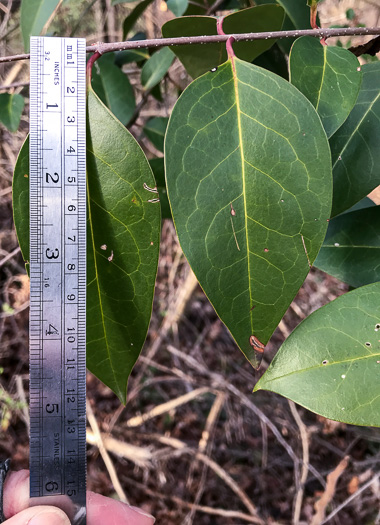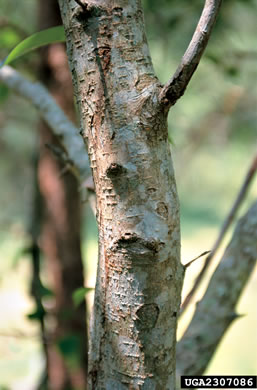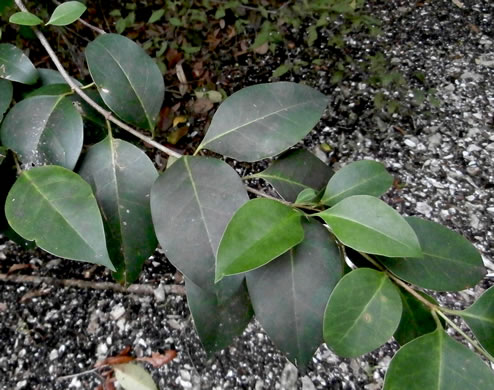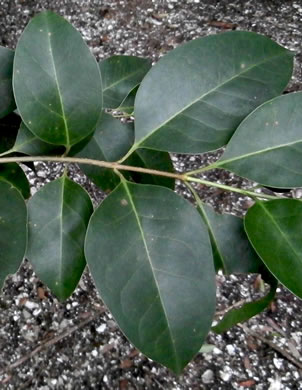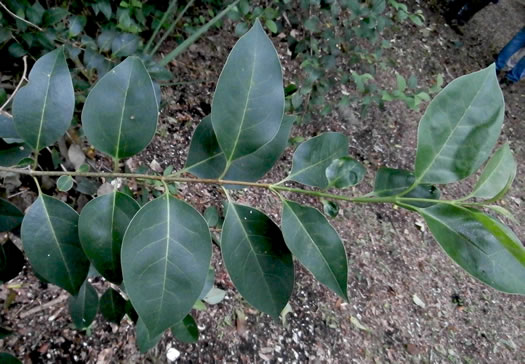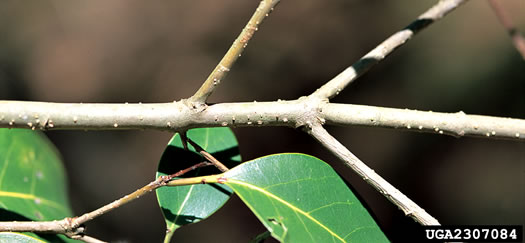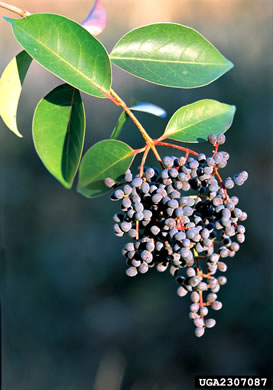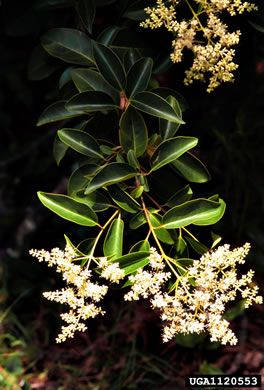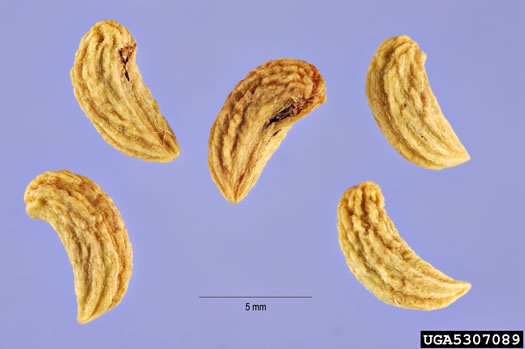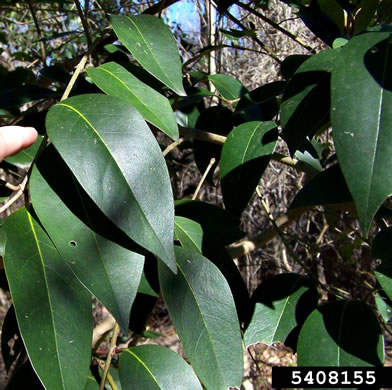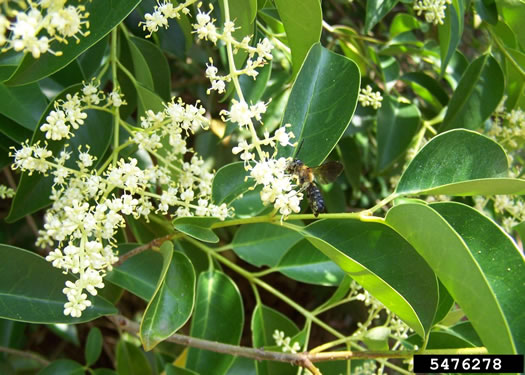Spermatophytes (seed plants): Angiosperms (flowering plants): Eudicots: Core Eudicots: Asterids: Lamiids: Lamiales
WEAKLEY'S FLORA OF THE SOUTHEASTERN US (4/24/22):
Ligustrum lucidum
FAMILY
Oleaceae
Go to FSUS key
Dig deeper at SERNEC, a consortium of southeastern herbaria.
Check out EDDMapS.org to see where this has been reported.
Read more about Glossy Privet at Vascular Plants of North Carolina.
SYNONYMOUS WITH
PLANTS NATIONAL DATABASE:
Ligustrum lucidum
FAMILY
Oleaceae
SYNONYMOUS WITH Manual of the Southeastern Flora (Small, 1933, 1938)
Ligustrum lucidum
COMMON NAME:
Glossy Privet, Broadleaf Privet
To see larger pictures, click or hover over the thumbnails.
JK Marlow jkm250213_1980
February Greenville County SC
Swamp Rabbit Trail
Leaves usually 6-13cm long; apex usually long-acuminate, per Weakley's Flora (2024).
James H. Miller, USDA Forest Service, Bugwood.org bug_2307086
June
Stem round in cross-section, light gray and relatively smooth w no fissures, per Forest Plants of the Southeast and Their Wildlife Uses (Miller & Miller, 2005).
JK Marlow jkm160915_065
September Beaufort County SC
Green's Shell Enclosure Heritage Preserve
Primary lateral veins translucent, (5)6-8 pr (vs. L. japonicum's 3-5 pr), per Weakley's Flora.
JK Marlow jkm160915_066
September Beaufort County SC
Green's Shell Enclosure Heritage Preserve
Petioles 1-3cm, per Flora of China.
James H. Miller, USDA Forest Service, Bugwood.org bug_2307084
October
Branches brownish-gray with raised light dots (lenticels), per Forest Plants of the Southeast and Their Wildlife Uses (Miller & Miller, 2005).
James H. Miller, USDA Forest Service, Bugwood.org bug_2307087
December
Conical, branched terminal clusters of ovoid drupes ripen to blue-black, per A Field Guide for the Identification of Invasive Plants in Southern Forests (Miller, Chambliss, & Lowenstein, 2010).
James H. Miller, USDA Forest Service, Bugwood.org bug_1120553
Month Unknown
Loosely branching, terminal and upper axillary conical clusters of flowers, per A Field Guide for the Identification of Invasive Plants in Southern Forests (Miller, Chambliss, & Lowenstein, 2010).
WEAKLEY'S FLORA OF THE SOUTHEASTERN US (4/24/22):
Ligustrum lucidum
FAMILY
Oleaceae
SYNONYMOUS WITH
PLANTS NATIONAL DATABASE:
Ligustrum lucidum
FAMILY
Oleaceae
SYNONYMOUS WITH
Manual of the Southeastern Flora (Small, 1933, 1938)
Ligustrum lucidum
If a search such as "Carex leptalea var. leptalea" doesn't deliver the results you want, try "Carex leptalea".
Or, to minimize chances of a misspelling, try just "Carex le".
Less is more: If "pencil flower" doesn't deliver the results you want, try "pencil".

